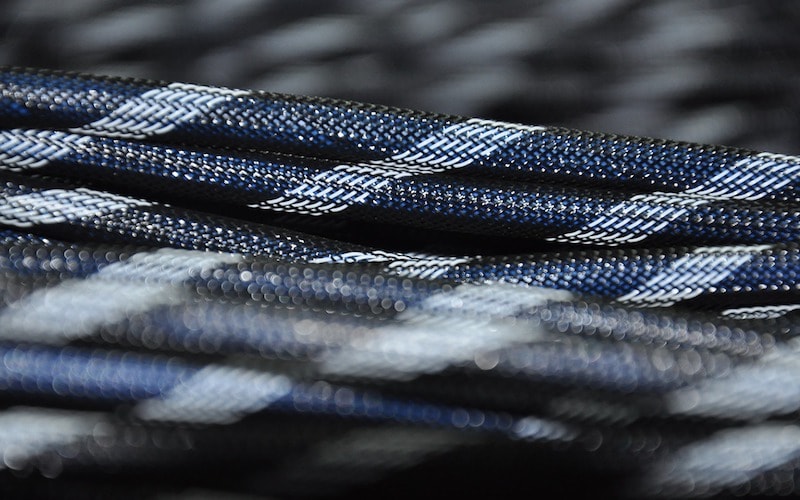By Eric Bodley
HDMI cables are to AV systems as nerves are to the human body. We know that nerves in the body are essential for sending messages to and from the brain. If a nerve is not functioning properly, and the information that the brain is sending or receiving is not accurate, then that part of the body may not function as it should.
In an AV system environment, if an HDMI cable is not made properly (to HDMI specifications or certification), is damaged, or is under-specified for the function it is used for, then the system will inherently suffer issues.
HDMI cables play a crucial role in the connectivity of each component, and each connection must work well and be able to transfer sensitive data accurately to ensure that information loss is minimized. By making the right HDMI cable choice, integrators and installers will make their lives easier and ensure a reliable “nervous system” for their projects for years to come.
Untangling the Installation Challenge
To simplify the installation process, there are a range of key features to look out for when selecting a cable. First, flexibility in the cable is needed to ensure that it can be easily maneuvered into place without damaging it.
A small connector shell is also advantageous. This allows the cable to fit into tight space applications or a congested rack.
Once your cable is in place, connector retention will ensure the connector doesn’t release from the socket too easily. Many HDMI connectors are made to simply fit into a HDMI socket without the attention to detail needed.
A connector should fit into a HDMI socket in such a way where it should not be easily removed with the slightest amount of pull pressure. For example, when you are cleaning around a set of equipment, you may disconnect accidentally.
A quality connector will have a retention force that should keep the connector in the socket. These connectors are made within a micro-millimeter of the required specification and not all manufacturers engineer and produce their products to this detail.
Another important factor to consider is the head shell pull strength. This allows integrators and installers to pull long lengths without damaging cable.
Grip tab head shells make the job of removing cable from a component a much simpler task. In addition, some manufacturers pre-test cables to provide further piece of mind.
Balancing the Budget
Saving money on a project is critical to profitability, but using poor quality components can and will erode the saving very quickly as soon as an issue arises. Cables are most critical when they have been run through walls and ceilings, which means to replace a faulty or incorrectly specified cable in such an instance could see the profit quickly disappear once it needs to be replaced.
Each service call to resolve an issue comes at a cost to a business, and the use of poor quality cables is well known by the discerning integrator to cause many issues.
Educating the Industry
Many integrators see an HDMI cable as a very basic part of an AV system, and they may not have the knowledge or training to know the importance of its role. More experienced integrators will have learned to appreciate the value of this component, due to knowledge attained over the years.
One of the ways to further educate and inform the industry is through marketing materials that makes sense of the technology and are sourced from reputable authorities such as DPL Labs, THX, HDMI Licensing, or associations such as AVIXA, CEDIA, and test instrument manufacturers like Quantum Data and Murideo.
Moving Forward
With the increasing demand on the industry for higher-data-rate transfer on HDMI cables and potentially other cables also, it’s important to provide the products to meet the requirements of the integrator. The goal for companies such as connectivity products distributor Future Ready Solutions is to provide reliable and capable products for the industry to use, while keeping a step ahead of the latest technology to bring it to market as soon as possible.
Furthermore, it’s important to keep up to date on the latest information by meeting with industry peers and partners, as well as attend training and education programs from industry associations. Sourcing appropriate reference material from leading global manufacturers, engineers, and companies is another way to help to meet the challenge of being a reputable and cable manufacturer.
With the introduction of new technology, there will always be challenges. But with each challenge, there is an opportunity to provide the industry with additional reliable products to meet the demand of these technologies. With so many new combinations of products available, cabling quality is now more critical than ever in every application.
For distributors, the challenge is to ensure that they are not only at the forefront in connecting this technology together, but that they are able to provide solid, reliable solutions to the needs of the industry users. It’s important for them to continue to focus on enhancing quality and developing more cabling products for the latest available technologies.
Eric Bodley is president of Future Ready Solutions







![ecobee premium airzone control The ecobee Smart Thermostat Premium. [Photo credit | ecobee]](https://restechtoday.com/wp-content/uploads/2025/06/ecobee-premium.jpg)
![Hub 3_02 The SwitchBot Hub 3 provides a user-friendly solution to the growing complexity of modern smart homes. [Photo credit | SwitchBot]](https://restechtoday.com/wp-content/uploads/2025/06/Hub-3_02-scaled-e1750179791687.png)
